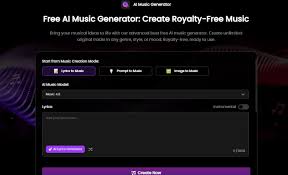Introduction
Game music production is a complex process that involves composition, sound design, implementation, and iteration. While traditional methods have served the industry well, developers and composers often face common challenges like tight deadlines, repetitive tasks, and creative blocks. Fortunately, AI-powered tools are transforming game music workflows, helping teams overcome these hurdles efficiently.
In this article, we’ll explore the most common pain points in game music production and how AI can streamline the process—from adaptive composition to dynamic mixing and beyond.
Common Challenges in Game Music Production
1. Time-Consuming Composition & Iteration
Creating unique, high-quality music for different game scenarios (e.g., combat, exploration, cutscenes) requires significant effort. Composers often spend hours tweaking tracks to fit dynamic gameplay, leading to bottlenecks.
2. Repetitive Sound Design Tasks
Layering instruments, adjusting loops, and ensuring seamless transitions can be tedious. Manual sound design eats up valuable time that could be spent on creativity.
3. Dynamic Music Implementation
Static music loops can break immersion. Truly adaptive music must respond to in-game events, but setting up interactive systems (e.g., Wwise or FMOD integrations) is technically demanding.
4. Mixing & Mastering Inconsistencies
Balancing volume levels, EQ, and effects across multiple tracks is tricky, especially when music needs to adapt dynamically. Poor mixing can disrupt the player experience.
5. Creative Burnout & Block
Composers often face pressure to produce large quantities of music quickly, leading to creative fatigue and repetitive output.
How AI Optimizes Game Music Workflows
1. AI-Assisted Composition Tools
AI-powered tools like AIVA, Soundraw, and OpenAI’s MuseNet can generate royalty-free music sketches based on mood, genre, or tempo. Composers can use these as starting points, significantly speeding up the creative process.
2. Automated Sound Design & Variation Generation
Tools like LANDR and Sonible use AI to suggest instrument layers, harmonies, and variations. This reduces manual work while maintaining creative control.
3. Dynamic Music Adaptation with AI
AI-driven middleware (e.g., Replica Studios) can analyze gameplay data and adjust music in real time—shifting intensity, tempo, or instrumentation based on player actions without complex scripting.
4. AI-Powered Mixing & Mastering
Platforms like iZotope’s Neutron and CloudBounce use machine learning to balance levels, apply EQ, and optimize tracks for different playback systems, ensuring consistent quality.
5. Overcoming Creative Blocks with AI Suggestions
Generative AI (e.g., Google’s Magenta) can propose melodic variations, chord progressions, and rhythmic patterns, helping composers break out of creative ruts.
Best Practices for Integrating AI in Game Music Production
Use AI as a Collaborator, Not a Replacement – AI should enhance creativity, not replace human composers.
Test AI-Generated Music in-Game Early – Ensure adaptive tracks work seamlessly with gameplay.
Combine Traditional & AI Workflows – Use AI for prototyping and manual refinement for final polish.
Stay Updated on AI Music Tools – The field is evolving rapidly; new solutions emerge frequently.
Conclusion
AI is revolutionizing game music production by automating repetitive tasks, enhancing creativity, and enabling truly dynamic soundtracks. By integrating AI tools strategically, developers and composers can save time, reduce burnout, and focus on what matters most—crafting immersive, emotionally resonant music for players.
Are you using AI in your game music workflow? Share your experiences in the comments!








